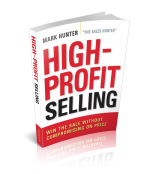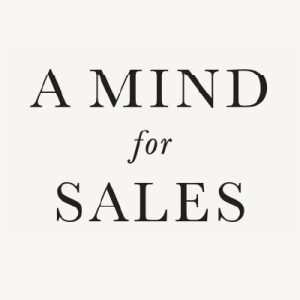Welcome to the Executive Sales Leader Briefing, a new blog series I am doing every Friday.
If you want to receive the Executive Sales Leader Briefing in text form in an email early Friday morning before it is published on the website, go to this page to sign up or complete the below information:
[javascript src=”https://wr150.infusionsoft.com/app/form/iframe/5c6d5f82e94a9cb18a44e2950f7dde77″/]
 Recently I was asked my view on how to set prices.
Recently I was asked my view on how to set prices.
The issue came up after I spoke at a national trade association conference to a room full of business owners. The discussion was robust, and as you can imagine, everyone had an opinion.
Below is a summary of what I shared with these business owners as to my six ways to determine price.
1. Cash-flow.
This is the lowest cost possible and designed purely to keep enough money in to keep the business open. (Far too many small companies adopt this strategy when they start to get into trouble. Result is it only kicks the can down the road and only winds up in a business suffering a slow death.)
2. Marketplace Pricing.
This is pricing at a point just below where the market is. Idea is to play the market, but be just slightly less, with the hope of being the one to get the business. (It’s a stupid idea, because it winds up being so fixated on the market that prices keep going lower and lower.)
3. High/Low Pricing.
Idea is to publish a really high price, only to offer unbelievable sale prices designed to stimulate sales. (Works well until competitors begin doing it, and then it becomes nothing more than a price war. A lot of window companies use this strategy and the result is it creates distortions in what the consumer feel is a good price.)
4. Cost + Margin.
Price is based on the cost of goods and the necessary margin to create good profit. (Very typical strategy used by companies that have a great reputation.)
5. Outcome Pricing.
Pricing based on the outcome / value the customer will receive. (Used by the entertainment industry in how they price seats you try to buy based on the experience and/or outcome you’re looking for.)
My preference is #5. This is the one that works the best when the salesperson has the ability to demonstrate value, which is the key role of what sales is charged with doing.
Since it was such a worthwhile discussion with the group of business owners, I felt you too could benefit from it.
This brings me to a key point — if your company or your association is having a meeting, give me a call and I will come speak to your group. Together we’ll help make it your best meeting ever.
Copyright 2016, Mark Hunter “The Sales Hunter.” Sales Motivation Blog. Mark Hunter is the author of High-Profit Selling: Win the Sale Without Compromising on Price.






